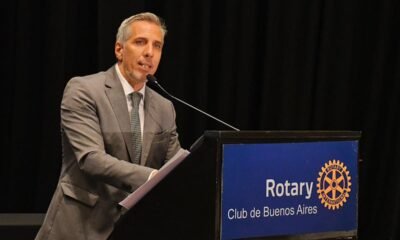INTERNACIONAL
Here’s what Trump wants to do to reshape the federal government during the shutdown
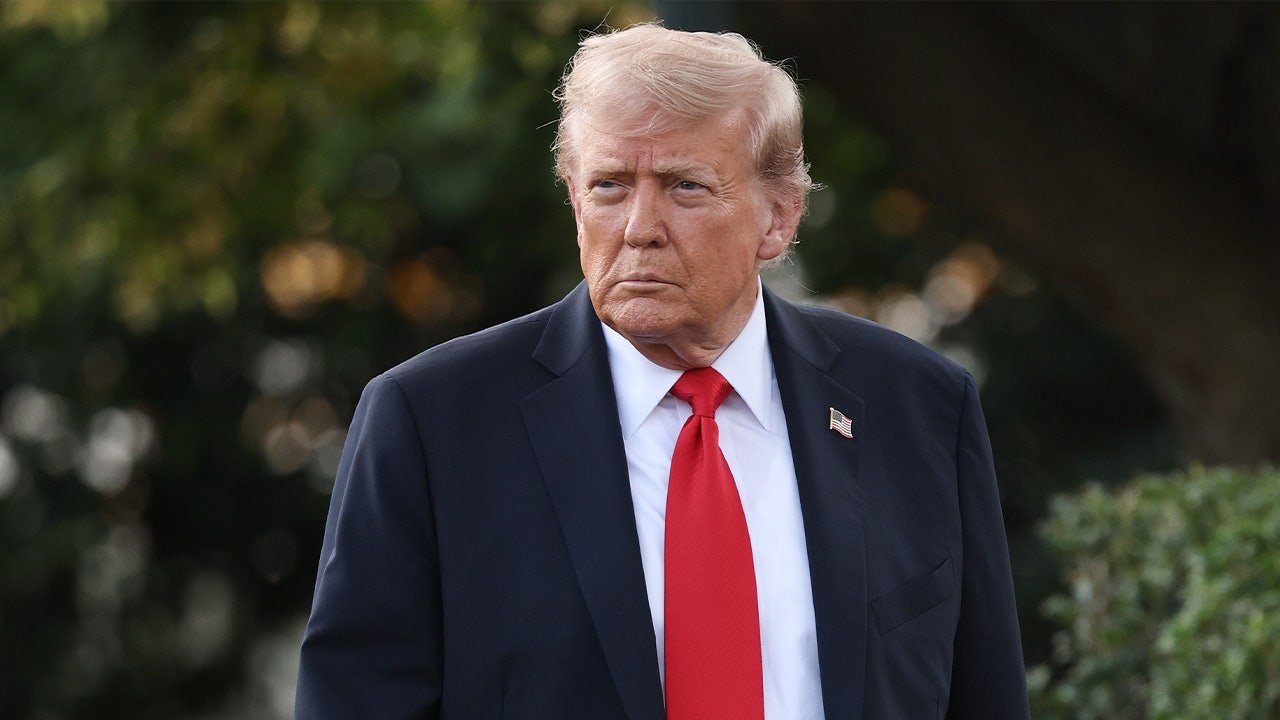
NEWYou can now listen to Fox News articles!
The federal government partially shut down early Wednesday after Democrats and Republicans failed to reach an agreement on a funding package.
In the lead-up to the midnight deadline to pass a budget package, President Donald Trump warned the administration could make «irreversible» changes to the federal workforce, most notably through a new wave of fresh layoffs. The president has underscored that he and his allies did not want the government to shut down, but that it opened the door for some «good» that could come from it.
Senate lawmakers failed to reach a spending agreement in time for the end of fiscal year 2025 Tuesday, after a short-term extension of fiscal year 2025 funding, aimed at keeping the government open through Nov. 21, passed the House mainly along party lines earlier in September.
GOVERNMENT SHUTS DOWN AFTER CONGRESS DEADLOCKS ON SPENDING DEAL
The federal government partially shut down Oct. 1, 2025, after Democrats and Republicans failed to reach an agreement on a funding package. (@realDonaldTrump via Truth Social)
Democrats expressed frustration at being shut out of spending negotiations and over the GOP bill’s exclusion of enhanced Obamacare subsidies that were first enacted in 2021 under President Joe Biden. Those subsidies, a COVID-19-era measure, are set to lapse at the end of 2025 unless Congress takes action, Fox News Digital has reported.
Republicans have since pinned the shutdown blame on Democrats, arguing they refused to fund the budget as an attempt to reinstate taxpayer-funded medical benefits for illegal immigrants through Democrat lawmakers’ continuing resolution, which would include extending the expiring Obamacare tax credits.
Democrat leadership have balked at the claims, throwing their own jabs at Trump and Republican lawmakers as the culprits behind the shutdown and squashing claims they want to provide healthcare to illegal immigrants.
TRUMP’S WHITE HOUSE DEMANDS AGENCIES MAP OUT MASS LAYOFFS AHEAD OF POTENTIAL SHUTDOWN
«They say that undocumented people are going to get these credits,» Senate Minority Leader Chuck Schumer said Tuesday. «That is absolutely false. That is one of the big lies that they tell.»
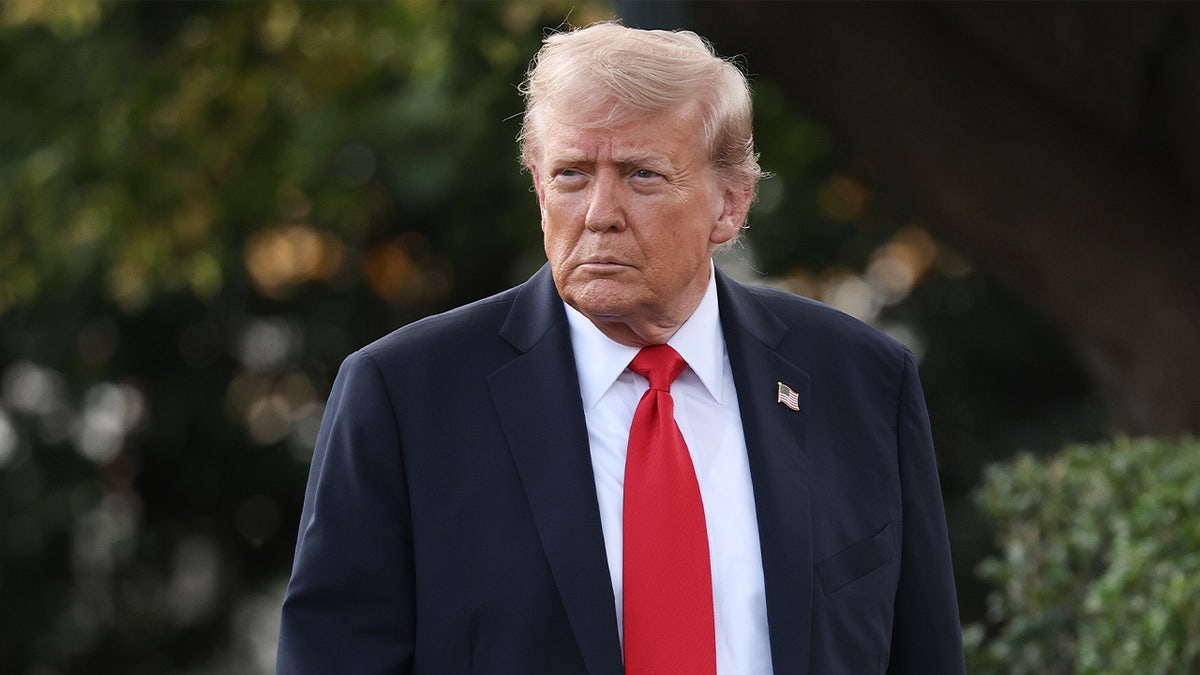
President Donald Trump said the government shutdown that took effect Oct. 1, 2025, will likely include mass layoffs and program cuts. (Win McNamee/Getty Images)
Trump warns layoffs on the horizon
Trump said during various public remarks Tuesday, as the countdown to the midnight deadline dwindled, that though he did not want a shutdown, it presents him with the opportunity for the administration to carry out layoffs as part of a continued mission to slim down the federal government and snuff out overspending and fraud.
«We don’t want it to shut down because we have the greatest period of time ever,» Trump said from the Oval Office Tuesday. «I tell you, we have $17 trillion being invested. So the last person that wants it shut down is us.»
«Now, with that being said, we can do things during the shutdown that are irreversible, that are bad for them and irreversible by them, like cutting vast numbers of people out, cutting things that they like, cutting programs that they like,» he continued.
A shutdown does not hand a president new powers, but instead concentrates discretion to the White House and Office of Management and Budget over what the executive branch continues operating or ending.
SPEAKER JOHNSON FLIPS SCRIPT ON DEM LEADERS WITH STAUNCH WARNING AGAINST GOVERNMENT SHUTDOWN
Under the Antideficiency Act, a federal law that guides the government through shutdowns, federal agencies are not permitted to spend funds, the Government Accountability Office outlines, except for a limited set of missions, such as performing constitutional duties. The executive branch is charged with interpreting those exceptions.
Office of Management and Budget Director «Russell Vought become very popular recently because he can trim the budget to a level that you couldn’t do any other way,» Trump continued Tuesday. «So they’re taking a risk by having a shutdown because, because of the shutdown, we can do things medically and other ways, including benefits. We can cut large numbers of people.»
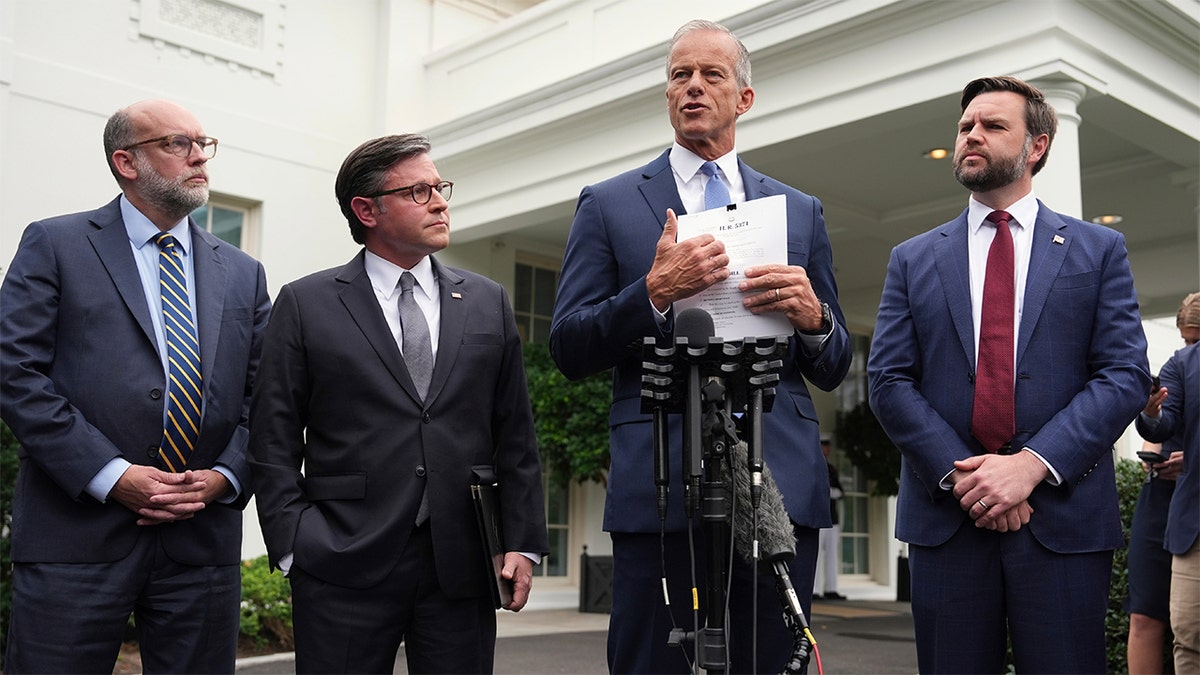
Senate Majority Leader John Thune, R-S.D., speaks alongside Russell Vought, Office of Management and Budget director, from left, House Speaker Mike Johnson, R-La., and Vice President JD Vance, as they address members of the media in Washington, Sept. 29, 2025. (Evan Vucci/AP Photo )
Later that day, Trump again said that he did not want a shutdown to unfold, but that «a lot of good» could come from it in order to weed out government overspending, noting «we’d be laying off a lot of people that are going to be very affected.»
«A lot of good can come down from shutdowns,» he said. «We can get rid of a lot of things that we didn’t want, and they’d be Democrat things. But they want open borders. They want men playing in women’s sports. They want transgender for everybody. They never stop. They don’t learn. We won an election in a landslide.»
SHUTDOWN EXPLAINED: WHO WORKS, WHO DOESN’T AND HOW MUCH IT COSTS
Vought declared an imminent government shutdown Tuesday evening ahead of the deadline, pinning blame on «Democrats’ insane policy demands, which include $1 trillion in new spending.»
«It is unclear how long Democrats will maintain their untenable posture, making the duration of the shutdown difficult to predict,» he wrote in a memo Tuesday. «Regardless, employees should report to work for their next regularly scheduled tour of duty to undertake orderly shutdown activities.»
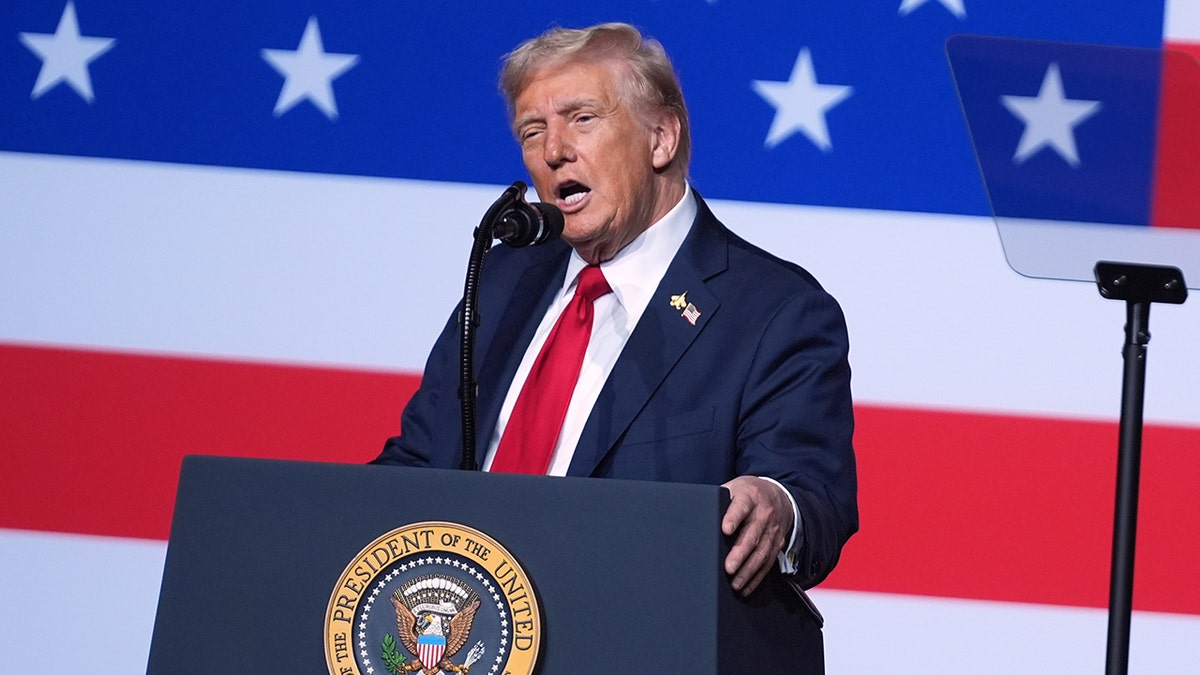
President Donald Trump speaks to a gathering of top U.S. military commanders at Marine Corps Base Quantico, Virginia, Sept. 30, 2025. (Evan Vucci/The Associated Press )
Vice President JD Vance joined the White House press briefing Wednesday and predicted that it wasn’t «going to be that long of a shutdown,» but that people will need to be laid off.
«We’re going to have to make things work,» he said. «And that means that we’re going to have to triage some certain things, that means certain people are going to have to get laid off. And we’re going to try to make sure that the American people suffer as little as possible from the shutdown.»
Vance added that the administration was «not targeting federal agencies based on politics» for layoffs.
«We’re in a shutdown, that causes some problems,» he said. «The troops aren’t getting paid. There’s nothing that we can do about that while the government is shut down. But there are essential services that we want to make sure as, as much as possible, they still continue to function. That is the principle that’s driving us forward during the shutdown.»
DOGE and vows to slim government
Anticipated layoffs and program cuts amid the shutdown follow Trump’s ongoing mission to gut the federal government of fraud, corruption and overspending, which first hit the nation’s radar in the early days of the administration when Trump launched the Department of Government Efficiency, as well as previous mass layoffs initiatives.
Back in January, the administration offered federal employees voluntary buyouts to leave their posts before rolling out reduction in force initiatives across various agencies to slim down the government.
«We have hundreds of thousands of federal workers who have not been showing up to work,» Trump said during his joint address to Congress in March. «My administration will reclaim power from this unaccountable bureaucracy, and we will restore true democracy to America again.»
SHUTDOWN FIGHT CASTS A SHADOW OVER JOBS AS TRUMP PREPARES FOR LARGEST FEDERAL RESIGNATION IN US HISTORY
«And any federal bureaucrat who resists this change will be removed from office immediately, because we are draining the swamp,» he added. «It’s very simple. And the days of rule by unelected bureaucrats are over.»
Simultaneous to reduction in force efforts and buyouts, tech billionaire Elon Musk was charged with leading DOGE as investigators scrutinized federal agencies in an effort to curb government overspending and stamp out fraud. DOGE’s work became a lightning rod for criticism among Democratic lawmakers and government employees, who filed a number of lawsuits attempting to end the investigations and audits.
Trump repeatedly has celebrated DOGE’s work during his first few months in office, including frequently listing off the various «flagrant scams» that the government was funding before DOGE’s investigations.
«Twenty-five million dollars to promote biodiversity conservation and socially responsible behavior in Colombia. This is Colombia, South America, not Columbia University. Of course, that might be worse,» Trump said in February during CPAC, rattling off different examples. «Forty million to improve the social and economic inclusion of sedentary migrants.»
«Forty-two million for social and behavior change in Uganda,» Trump continued. «Ten million for Mozambique medical male circumcisions. Why are we going to Mozambique to do circumcisions?»
CLICK HERE TO GET THE FOX NEWS APP
Fox News Digital reached out to the White House Wednesday morning for additional comment on the shutdown and Trump’s plans but did not immediately receive a reply.
Fox News Digital’s Elizabeth Elkind, Alex Miller and Deirdre Heavey contributed to this report.
donald trump,government shutdown,doge,congress
INTERNACIONAL
US deploys Ford carrier strike group to combat narco-terror in Western Hemisphere

NEWYou can now listen to Fox News articles!
The Trump administration has ordered the deployment of the Gerald R. Ford Carrier Strike Group in the Western Hemisphere as the U.S. continues to target suspected drug smuggling vessels in the Caribbean.
«In support of the President’s directive to dismantle Transnational Criminal Organizations (TCOs) and counter narco-terrorism in defense of the Homeland, the Secretary of War has directed the Gerald R. Ford Carrier Strike Group and embarked carrier air wing to the U.S. Southern Command (USSOUTHCOM) area of responsibility (AOR),» chief Pentagon Spokesman Sean Parnell said in a statement Friday.
«The enhanced U.S. force presence in the USSOUTHCOM AOR will bolster U.S. capacity to detect, monitor, and disrupt illicit actors and activities that compromise the safety and prosperity of the United States homeland and our security in the Western Hemisphere,» he added. «These forces will enhance and augment existing capabilities to disrupt narcotics trafficking and degrade and dismantle TCOs.»
The Trump administration has ordered a number of strikes in the Caribbean aimed at dismatling and disrupting drug cartels in the region.
Most recently, War Secretary Pete Hegseth announced on Thursday that a strike on a vessel allegedly operated by members of Tren de Aragua (TdA), a Designated Terrorist Organization (DTO), killed six alleged narco-terrorists.
This story is breaking. Please check back for updates.
military
INTERNACIONAL
La neurociencia revela cómo se forman y modifican los hábitos

La neurociencia ha demostrado que los hábitos, esos comportamientos automáticos que moldean la rutina diaria y repercuten en la salud mental, surgen de la interacción entre dos sistemas cerebrales: uno responsable de responder a estímulos y otro orientado por metas y creencias.
Esta perspectiva, presentada mediante un estudio publicado en enero de 2025 por investigadores del Trinity College Dublin, está transformando la comprensión sobre la formación y modificación de los hábitos, con efectos directos en la vida cotidiana y en el tratamiento de trastornos compulsivos.
Eike Buabang y su equipo destacan el denominado marco de doble sistema. Este concepto, respaldado por la neurociencia cognitiva, sostiene que los hábitos resultan del equilibrio entre un sistema de control dirigido por objetivos —basado en la evaluación consciente de acciones y resultados— y un sistema estímulo-respuesta, que automatiza conductas frente a señales familiares.
Cuando el sistema estímulo-respuesta domina, las personas tienden a repetir acciones sin analizar su relación con metas actuales, lo que puede derivar en errores, impulsividad o conductas compulsivas. Como señalan Buabang y sus colegas: “Los hábitos pueden entenderse como un balance entre un sistema impulsado por estímulos, basado en asociaciones estímulo-respuesta, y un sistema dirigido por objetivos, basado en expectativas acción-resultado y metas valoradas”.

La formación de hábitos responde a varios mecanismos clave. Destaca la repetición, ya que cada vez que una conducta se repite en un contexto similar, las conexiones neuronales entre estímulo y respuesta se refuerzan, facilitando su automatización. No obstante, el estudio muestra que la evidencia es dispar sobre cuántas repeticiones se requieren: algunos trabajos sitúan el rango entre 18 y 254 días, según el tipo de hábito y características de la persona.
El refuerzo —la obtención de consecuencias positivas tras la acción— fortalece los hábitos, gracias en parte a la dopamina en regiones cerebrales como el putamen posterior. Además, cuando se desactivan los procesos dirigidos por objetivos, por presión de tiempo, estrés o distracción, el sistema estímulo-respuesta asume el control. La estabilidad del contexto favorece la consolidación de los hábitos, ya que la repetición en entornos previsibles disminuye la necesidad de supervisión consciente y permite que las acciones se encadenen de modo automático.
Existen diferencias individuales y neurobiológicas que influyen en la facilidad para formar o interrumpir hábitos. La estructura y actividad de circuitos como el putamen y la corteza prefrontal dorsolateral varían entre personas, lo que explica por qué algunos adquieren hábitos con rapidez mientras que otros precisan más tiempo o repeticiones. Además, la intensidad de las señales contextuales, la frecuencia de repetición y la motivación —tanto intrínseca como extrínseca— modulan este proceso. Según la investigación: “La duración necesaria para formar un hábito varía considerablemente entre individuos”, lo que resalta la importancia de personalizar las estrategias de intervención.
Romper hábitos arraigados requiere debilitar las asociaciones estímulo-respuesta, evitar los estímulos desencadenantes, potenciar la inhibición dirigida por objetivos y, en muchos casos, crear hábitos alternativos que compitan con los anteriores. La extinción de un hábito no elimina las conexiones previas, sino que genera una nueva asociación entre el contexto y la ausencia de respuesta, lo que explica la propensión a recaer frente a los estímulos originales.
Estrategias como la evitación de contextos problemáticos, el entrenamiento en inhibición y la formación de intenciones de implementación (“si ocurre X, haré Y”) presentan eficacia tanto en entornos experimentales como en la vida cotidiana. Estas técnicas operan en terapias conductuales y farmacológicas, y pueden potenciarse mediante intervenciones como la estimulación cerebral no invasiva, que refuerza el control ejecutivo.

Las aplicaciones clínicas de estos avances resultan especialmente relevantes en trastornos compulsivos, como el trastorno obsesivo-compulsivo (TOC), las adicciones y los trastornos alimentarios. En estos casos, se identifica un déficit en el control dirigido por objetivos, lo que favorece la aparición de hábitos patológicos. Como advierte la investigación: “El trastorno obsesivo-compulsivo, el trastorno por consumo de sustancias y los trastornos alimentarios están vinculados a déficits en el control dirigido por objetivos, posiblemente explicados por una dimensión transdiagnóstica de compulsividad”.
Las terapias más eficaces combinan la exposición a los estímulos desencadenantes, la prevención de la respuesta habitual y el refuerzo de conductas alternativas, lo que permite abordar tanto mecanismos automáticos como procesos conscientes.
A pesar de estos avances, la investigación actual enfrenta desafíos metodológicos y conceptuales. Persisten dificultades para replicar hallazgos clave en humanos y continúa el debate sobre la suficiencia del modelo de doble sistema. Buabang y sus colegas proponen modelos más complejos, integrando la interacción dinámica entre hábitos de pensamiento, creencias automáticas y conductas. La transferencia de hábitos entre contextos y la resistencia al cambio figuran como áreas de estudio aún en desarrollo.
Hacia el futuro, la investigación subraya la importancia de profundizar en los mecanismos subyacentes a la formación y alteración de hábitos, así como adaptar las intervenciones a las distintas características individuales y contextuales. Solo mediante una comprensión más precisa de estos procesos será posible diseñar estrategias realmente eficaces para promover cambios conductuales duraderos y mejorar el abordaje de trastornos relacionados con la compulsividad.
deporte,running,mujeres,parque,ejercicio,vida saludable,mañana,ciudad,bienestar,actividad física
INTERNACIONAL
New York Attorney General Letitia James enters plea in federal mortgage fraud case
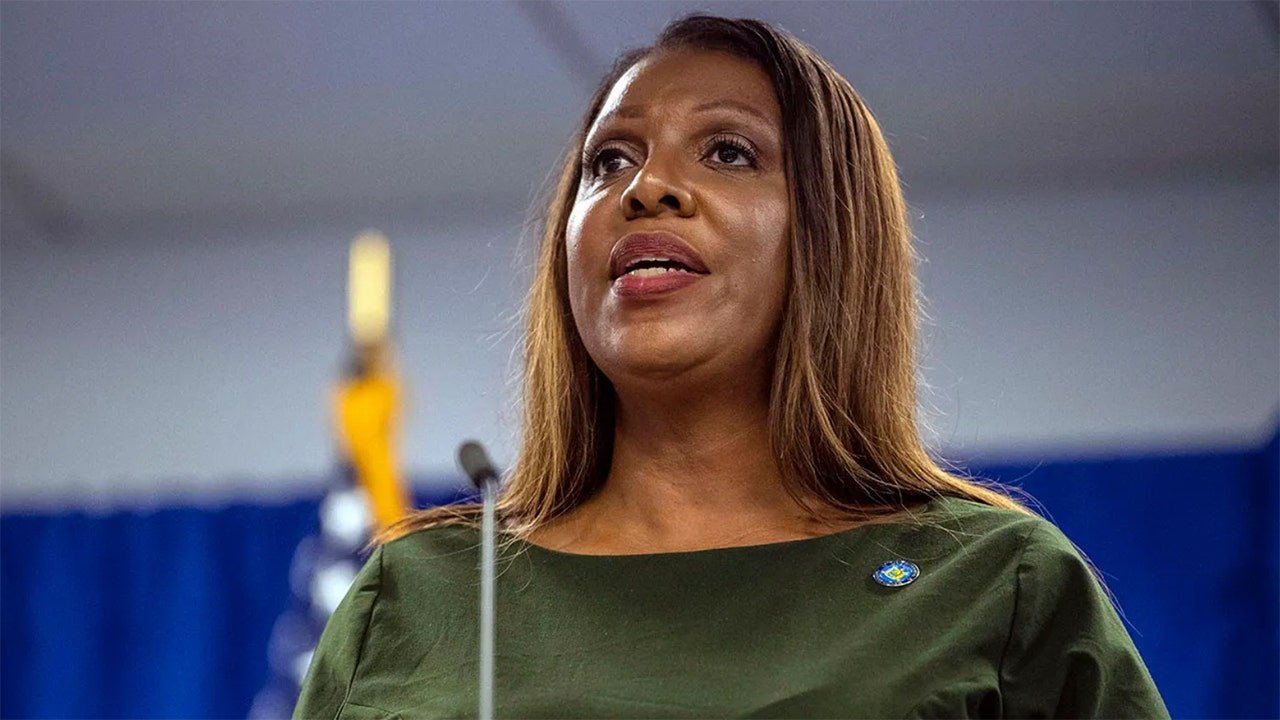
NEWYou can now listen to Fox News articles!
New York Attorney General Letitia James was arraigned at a federal court in Norfolk, Virginia, Friday, where she pleaded not guilty to two felony charges of bank fraud and making false statements to a financial institution.
The charges against James stem from her 2020 purchase of a home in Norfolk, Virginia. Prosecutors allege that James misled a bank about the nature of the residence in order to obtain more favorable loan conditions.
The indictment states that James misrepresented the financial institution in claiming it would be her secondary residence, and instead rented it out to a family.
According to the indictment, the lower interest rate would allow James to save nearly $19,000 over the course of the 30-year loan.
LETITIA JAMES TO BE ARRAIGNED IN VIRGINIA ON FEDERAL BANK FRAUD CHARGES TIED TO 2020 HOME PURCHASE
NY AG Letitia James and President Donald Trump (Getty Images)
James entered the not guilty plea herself to U.S. District Judge Jamar K. Walker.
She is being represented in the case by defense attorney Abbe Lowell, and by Andrew Bosse, a former assistant U.S. attorney based in Norfolk who formerly headed up the office’s criminal division.
James’ arraignment is the latest in a string of prosecutions brought against the president’s perceived political foes, despite objections from career prosecutors — some of whom have since been fired or resigned.
James, a Democrat, has long-drawn Trump’s ire after she campaigned for attorney general in 2016 largely on vows to investigate Trump’s actions and businesses.
She also successfully secured a $450 million civil fraud case against him last year, though an appeals court later tossed the financial penalty portion of the case.
«This is nothing more than a continuation of the president’s desperate weaponization of our justice system,» James said in a statement after she was indicted.
DOJ SEEKS REMOVAL OF COMEY’S DEFENSE LAWYER, CITING CONFLICT OF INTEREST
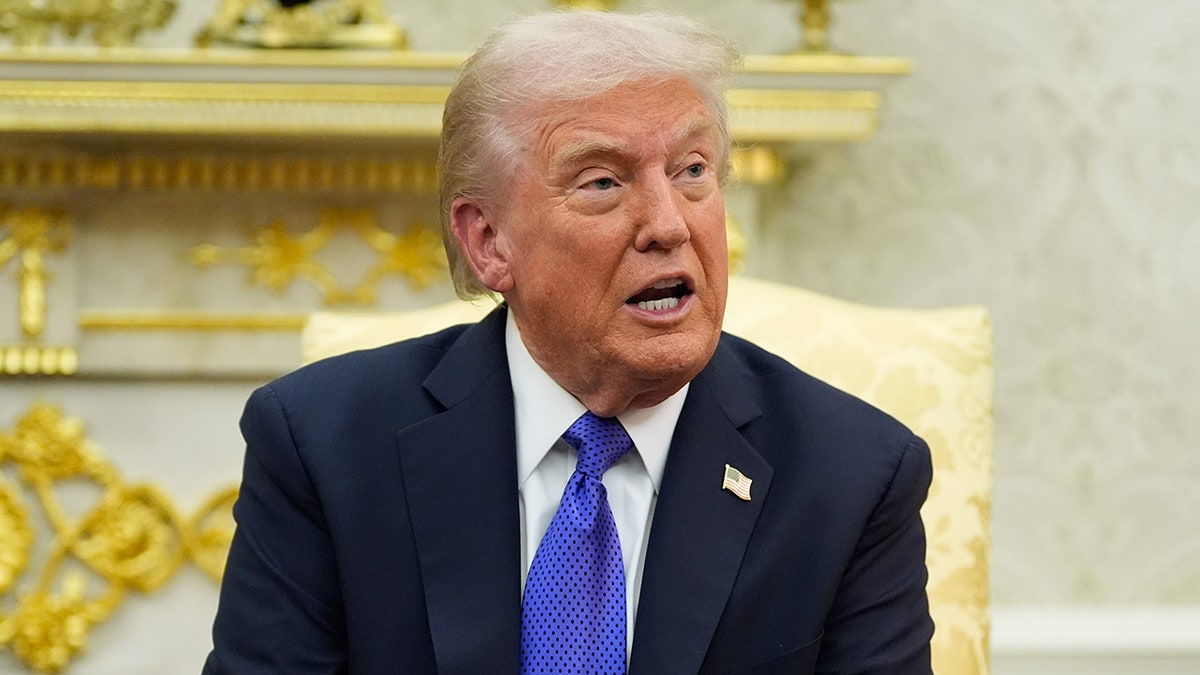
Trump denies B1 bombers flew toward Venezuela amid cartel threats. (AP Photo/Alex Brandon)
«These charges are baseless, and the president’s own public statements make clear that his only goal is political retribution at any cost,» she added.
Her indictment, like the indictment of former FBI Director James Comey, was presented to a grand jury by former White House aide Lindsey Halligan, whom President Donald Trump installed as the acting U.S. attorney for the Eastern District of Virginia last month.
Trump, in September, said he would install Halligan as the top prosecutor for the Eastern District of Virginia, replacing interim attorney Erik Siebert, who resigned under pressure to indict both Comey and James.
«No one is above the law. The charges as alleged in this case represent intentional, criminal acts and tremendous breaches of the public’s trust,» Halligan said in a statement. «The facts and the law in this case are clear, and we will continue following them to ensure that justice is served.»
After the arraignment, it is likely that she will file a motion to dismiss her case for vindictive and selective prosecution, following similar steps taken by Comey’s legal team in Alexandria earlier this week.
She will also file a motion to dismiss her case based on what her lawyers will argue was the unlawful appointment of Halligan in securing her indictment.
CLICK HERE TO GET THE FOX NEWS APP
Lowell, her attorney, has described the case against her as «improper political retribution,» and vowed they would «fight these charges in every process allowed in the law.»
The Justice Department did not immediately respond to Fox News’s request for comment on the case, or whether Halligan or Keller would be joined by any other federal prosecutors in the Eastern District of Virginia.
Speaking to reporters outside the court on Friday, James said the Justice Department is being used as a tool of «revenge,» and a «vehicle of retribution.»
«But my faith is strong,» she told the group that had massed outside the courthouse in Norfolk, Virginia, hours earlier. «I have a belief in the justice system.»
«Never cow down or break or bend. So there is no fear today,» she said. «I will not be deterred.»
Judge Walker set a trial date for Jan. 26, 2026, and ordered parties to appear back in court for motions hearings in early December.
politics,new york,federal courts,donald trump,crime world,virginia

 CHIMENTOS2 días ago
CHIMENTOS2 días agoAdabel Guerrero confesó de qué famosa está enamorada y que le encantaría tener relaciones: «La China Suárez me sorprendió con su belleza»

 DEPORTE2 días ago
DEPORTE2 días agoUniversidad de Chile vs. Lanús, por la Copa Sudamericana: día, horario y cómo verlo por TV

 POLITICA2 días ago
POLITICA2 días agoDiego Luciani, sobre la condena a Cristina Kirchner: “No hay sentencia ejemplar sin recuperar lo robado”

























